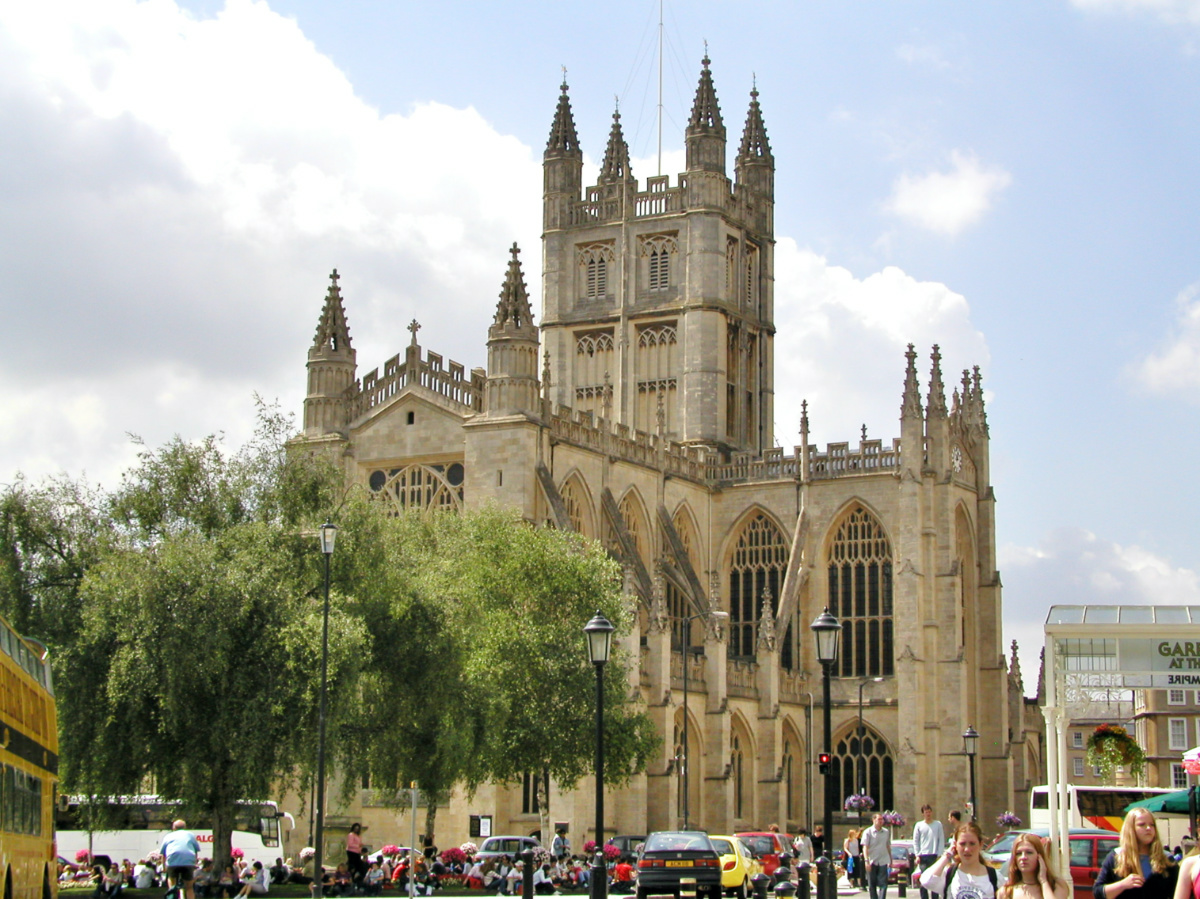
ANGELA YOUNGMAN reports on the Church of England’s push to reduce carbon emissions from its activities and achieve the ambitious target of net zero by 2030…
Norwich, UK
Seeking to update and economise its heating, Bath Abbey is using its Roman-era drains to provide cutting-edge heating for the future.
The ancient drains – which were built when Bath was known as “Aquae Sulis” (Latin for the “waters of Sulis”) thanks to its natural hot water springs – are being used to provide eco-heating by funnelling water, naturally maintained at 40 degrees Celsius, beneath the neighbouring street.

Bath Abbey. PICTURE: iStockphoto.
As part of the project, 10 custom built heat exchangers had to be installed underground, a task that proved challenging since the water heat meant that the installers could only work for 20 minutes at a time. The level of heat now being generated is heating not just the abbey but also the adjacent Georgian building.
Canon Guy Bridgewater, the rector of Bath Abbey, says the new system has been a big improvement.
“Previously the abbey’s heating system, which dates to the Victorian era, was energy inefficient and expensive to maintain, but now instead we’re able to harness this previously unused natural resource.”
– Canon Guy Bridgewater, the rector of Bath Abbey.
“Previously the abbey’s heating system, which dates to the Victorian era, was energy inefficient and expensive to maintain, but now instead we’re able to harness this previously unused natural resource.”
Bath Abbey’s use of its natural heating capability is just one example of how Church of England churches are looking to reduce their carbon emissions in a bid to reach the target of net zero by 2030.
Earlier this year, the church released a “route map” to show how churches, schools and theological education colleges can make changes in their day-to-day activities to reduce carbon emissions and achieve the ambitious target of net zero by 2030.
Introducing the route map in July, the Bishop of Norwich, Graham Usher, the Church of England’s lead bishop for the environment, said the target was “hugely ambitious”, but added that the “process” was as important as the target.
“This work is central to our story with God and creation and I see it as a key part of our obedience to God’s call to be stewards of creation,” he said. “It’s a pragmatic, step-by-step approach. It charts the territory into an unknown landscape, with the best knowledge that we currently have.”
Acknowledging that the route map may have to flex and adapt over the coming years, Usher points out that the much of the process can be achieved easily.
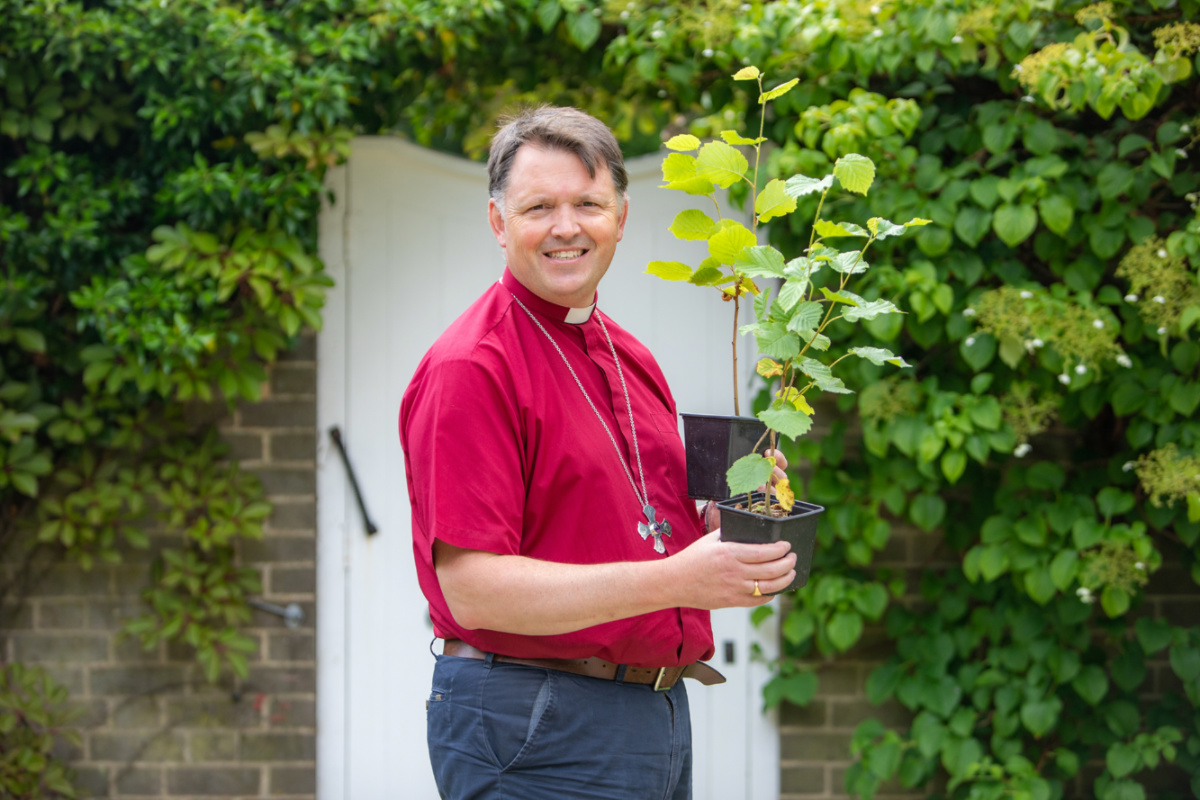
Bishop of Norwich, Graham Usher, the Church of England’s lead bishop for the environment. PICTURE: Courtesy of the Bishop of Norwich
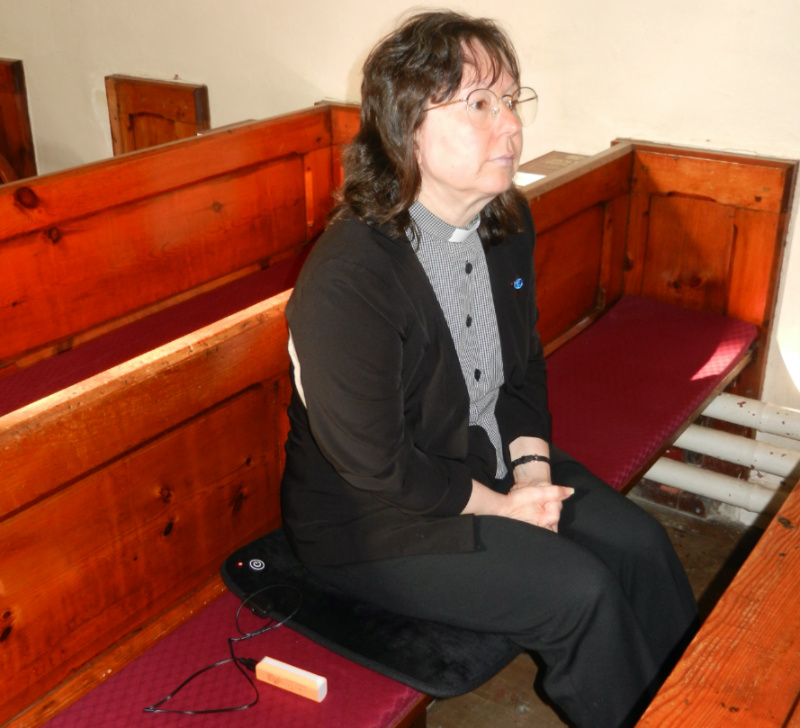
Rev Canon Janice Ward sits on a warming cushion at Marown Church in the Diocese of Sodor and Man PICTURE: Janice Ward.
BATTERY OPERATED CUSHIONS KEEP PARISHIONERS WARM
Over on the Isle of Man, Marown Parish Church, part of the Diocese of Sodor and Man, decided to focus on warming people rather than buildings for most services.
“This is a rural church with a small congregation,” explains Rev Janice Ward. “You don’t have to sit on them, although you can. The cushions can be used on your hands, feet or back. In the totally unheated church the cushions provided the only source of heating.”
It takes up to three hours to recharge each cushion using a green energy tariff. Once charged, the cushion stays warm for approximately one hour.
“We tend to charge them up here at the vicarage when there is someone at home just to keep an eye on them. That is for our personal convenience and safety consciousness,” Ward says.
First trialled last winter, the cushions have been an enormous success and very popular with parishioners. Asked for feedback, some parishioners said they would be prepared to contribute to the cost of buying more.
“We will definitely be using the cushions ourselves this winter and are recommending other people and churches try them out. They are such an easy and cost effective way of helping congregations stay warmer. They are light to carry from place to place, easy to use, adaptable as to how each person uses them.”
The route map to net zero carbon churches highlights how it is possible to reduce carbon emissions by using relatively easy and cheap methods to reduce energy consumption, improve energy efficiency while making buildings more comfortable to use.
Priority is given to identifying high energy consuming, high carbon emitting buildings and developing plans to tackle carbon emissions from them. It sets out key themes for each church building to follow: to understand, how, where and when a specific building uses energy and why, to look at what reductions can be made, what can be improved, the role energy audits and to create a plan for each building.
Churches are being asked to focus first on simple things that every church community can do such as changing to LED lighting on a renewable energy tariff, switching to green energy, turning off unneeded lighting and equipment, turning down the thermostat, reducing draughts and undertaking good maintenance, preparing in advance for possible longer term expenses and more challenging tasks such as new heating systems rather than having to make rapid, possibly expensive decisions.
St Michael’s Church in Baddesley Clinton, Warwickshire, only has a small congregation but is visitd by more than 15,000 people annually, many of them dropping in after visiting the adjacent National Trust-owned Baddesley Clinton House.
In 2017, the congregation began to think how to improve the heating and reduce costs and, as a result, a new under pew fan heating system was introduced, lighting changed to LED systems and optimised the heating system operating hours to give a comfortable warm church during a service, but no more.
It also installed a smart meter and negotiated a new supply contract certifying that all supplies came from renewable sources.
Treasurer Will Davies says that as a result of these decisions, energy consumption declined 4,850 units (kilowatt hours) in 2017 to 2,373 units by 2019. Since then, the church congregation has been focusing on calculating CO2 emissions including travel to church, so as to offset it by investing in Climate Stewards, a Church of England-recognised organisation which partners on CO2 reduction projects overseas.
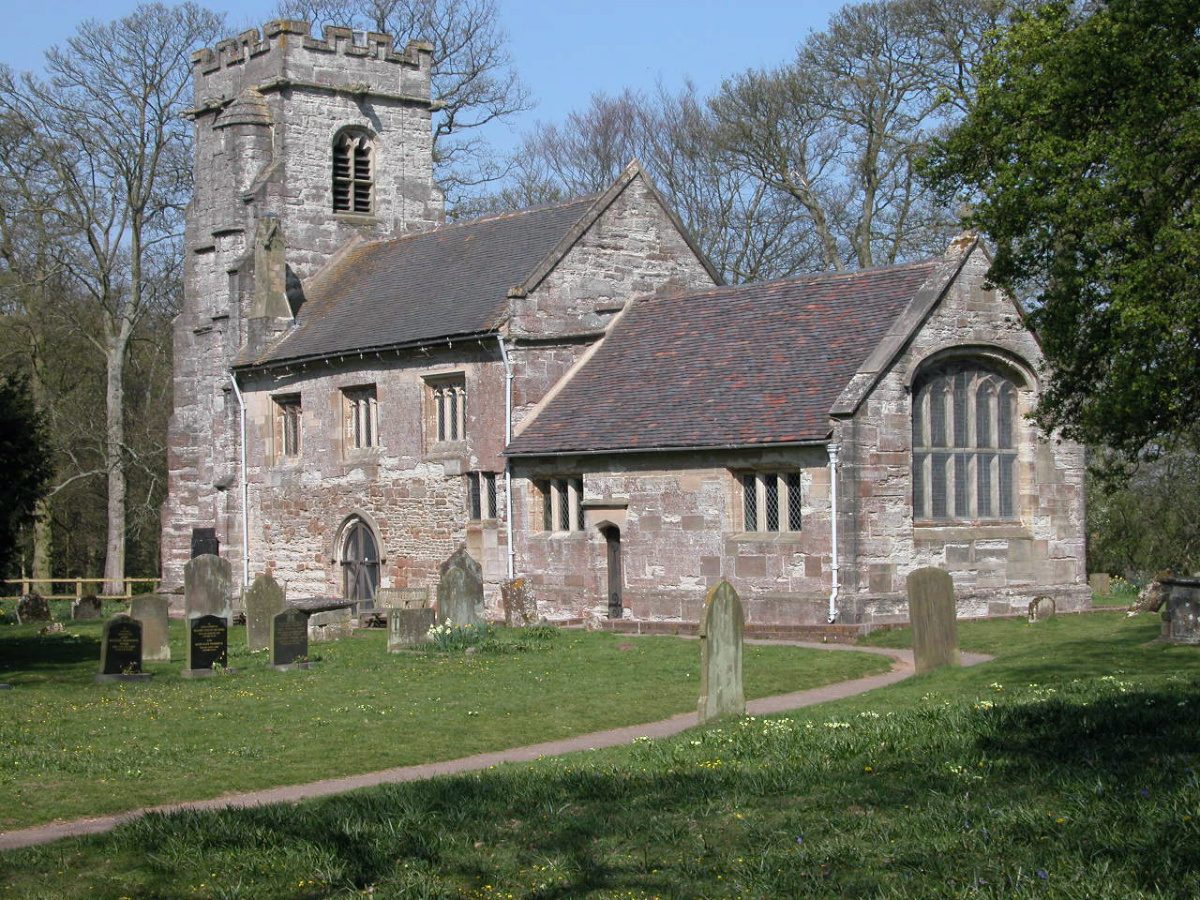
St Michael’s Church in Baddesley Clinton. PICTURE: Will Davies
It is not just buildings that have come under scrutiny under the route map. The plan has also highlighted the need for all participants from clergy to school children to think about the wider issues such as how they get to schools and places of worship. Walking, lift sharing, and public transport are being encouraged, along with the development of travel plans and questioning what travel is necessary.
As the route map points out, all of these measures have been tried, tested and proved to work. It points to numerous case studies highlighting measures that been taken. These range from simple measures like using battery powered cushions to installing solar panels.
“If we think of reaching net zero as a list of ten things, eight of them are fairly straightforward and let’s work together on the other two,” Usher pointed out.
We rely on our readers to fund Sight's work - become a financial supporter today!
For more information, head to our Subscriber's page.
Sharing information and working collectively makes a difference, along with gathering data on energy use via the church Energy Footprint Tool to identify year on year reductions since this will enable all the elements on the list to be achieved.
The route map has been approved by the synod of the Church of England, which is now encouraging all buildings within its remit to draw up appropriate programs of action, with a clear time frame. Progress will be reported to the synod in 2025, 2028 and 2031.
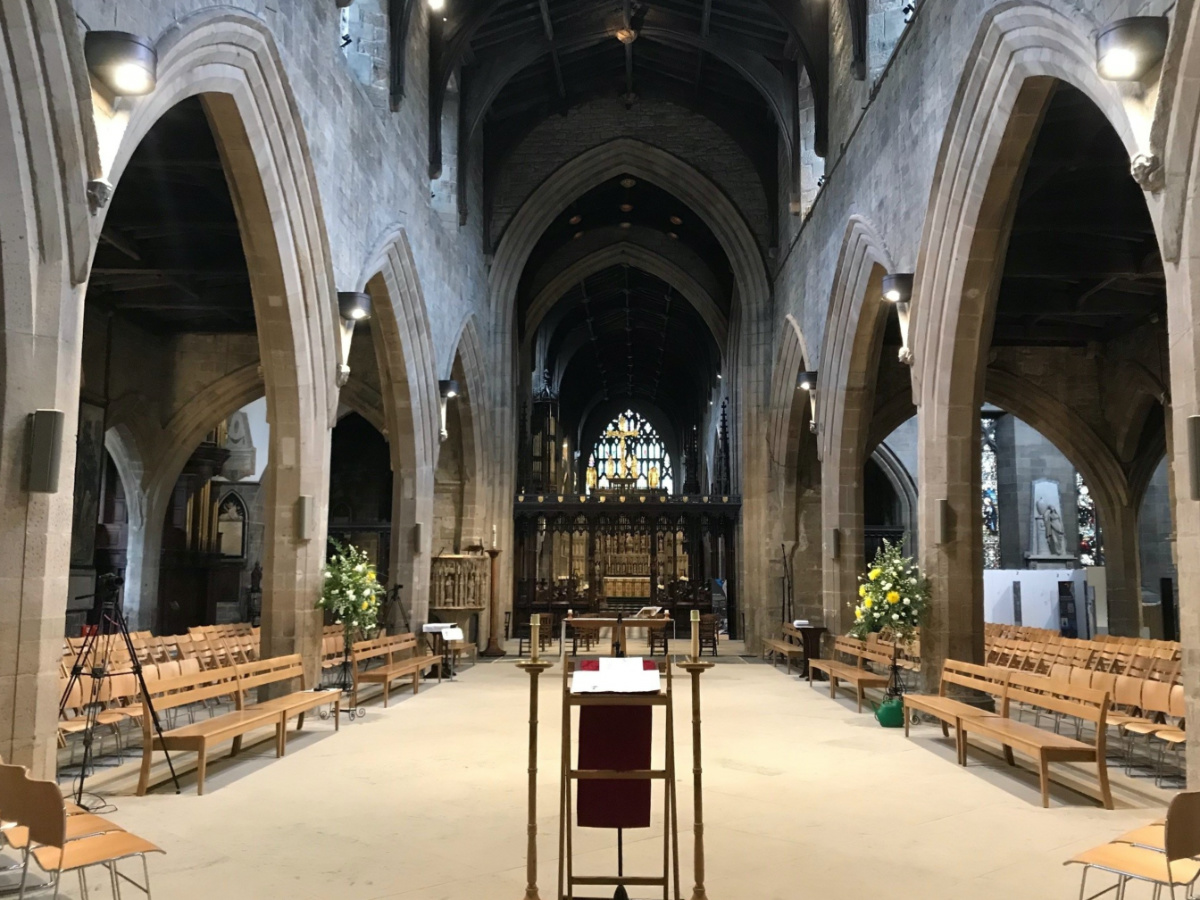
The interior of Newcastle Cathedral PICTURE: Courtesy of Newcastle Cathedral.
Newcastle Cathedral is among those church which has been taking action to reduce emissions, balancing the need to preserve the fabric of the building while also looking to ensure the comfort of visitors.
It recently completed a major 19 month reordering of heating and lighting which included the installation of LED lighting and under floor heating in the nave supported by air source heat pumps. Gas boilers and radiators are still available to provide additional top up heating when required.
The cathedral acknowledges that this winter will be real test, especially with utility costs rising with a spokesperson saying “the modelling shows that we should save energy in due course”.
“It’s a question of learning how the system works best for a consistent environment, ie preserving the fabric of the building but also thinking of visitor’s comfort.”






